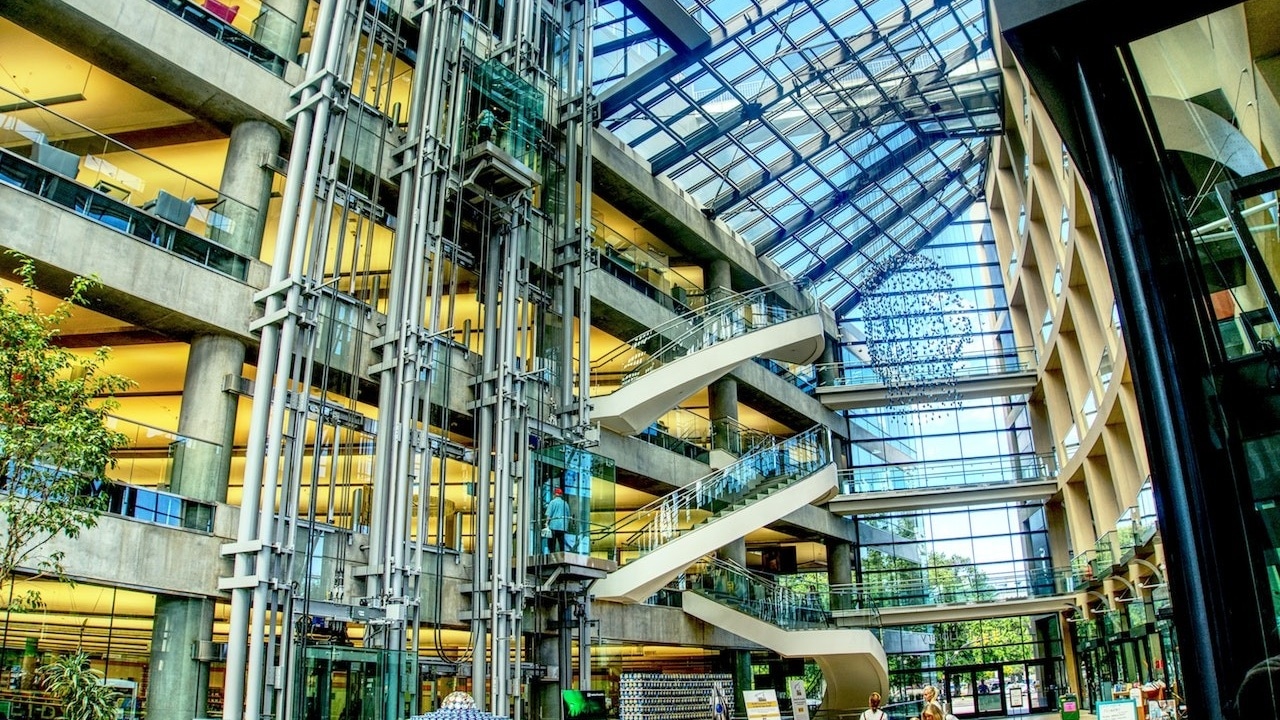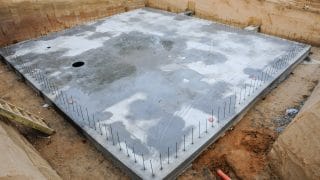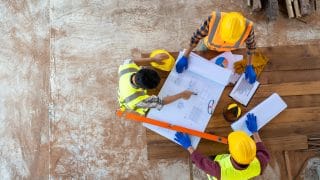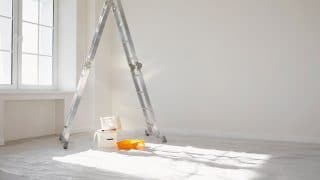All About LEED—Certification Process, Levels, and Benefits
Feb 17, 2021

For many people today—including developers, business owners, and home buyers—constructing as well as working in and living in green buildings has become a priority. As awareness of climate change grows, so does the demand to lower the environmental impact of construction. This is a multifaceted endeavor, which involves using rapidly renewable building materials like wood, as well as increasing energy efficiency and improved air quality—and more.
Defining “green” when it comes to buildings has, however, been a complicated task. Much like the terms “organic” or “all-natural” in other areas, the term “green” does not have a consistent set of criteria behind it. Enter LEED certification.
What is LEED?
LEED standards were created with the goal of providing a rating system—industry-wide criteria and common benchmarks to encourage environmentally responsible building design and construction. The acronym stands for “Leadership in Energy and Environmental Design.”
The original LEED green building certification standards issued in 1998 were developed by the US Green Building Council (USGBC) in partnership with the Natural Resources Defense Council (NRDC), both based in Washington, D.C. Although originally intended to cover construction and operations in the United States, LEED has become the world’s most commonly used green certification program.
LEED has gone through several iterations since 1998. The current version was adopted in 2016, though it largely followed the previous iteration in 2007 with modifications to address some specific building types, like schools and warehouses (both existing and new).
How does LEED certification work?
Before a project can be considered for LEED certification, it must demonstrate that it is in compliance with all local environmental regulations, meet certain green prerequisites, and also be willing to share data on energy and water use for five years after occupancy. The maximum number of points for most projects is 110 (under LEED Homes, projects can earn up to 125 points). The more points a project earns, the higher its certification level.
What are the 9 LEED categories?
LEED points are accumulated in nine different categories.
- Integrative process. Projects get credit for adopting an integrated approach to design and construction, with team members looking for synergies and opportunities for innovation through constant communication. An integrated approach also increases efficiency and minimizes delays.
- Location and transportation. Points are rewarded for locating a building in certain high-priority areas, like an empty site in an otherwise dense urban district. Buildings can earn transportation points by integrating a site with public transit and providing bike facilities.
- Sustainable sites. This category includes efforts to protect the natural habitat, manage rainwater, maintain open spaces, and reduce heat-island effects.
- Water efficiency. Projects are encouraged to reduce water usage through landscaping choices and the use of water-efficient toilets, faucets, and showerheads.
- Energy and atmosphere. Buildings earn points in this category through energy efficient design choices and reliance on renewable energy sources.
- Materials and resources. Buildings can earn credits by using building materials that use recycled or highly renewable content—such as engineered wood products like MDF or glulam—or new ones that are created without using toxic substances and with minimal impacts on the environment.
- Indoor environmental quality. Points are rewarded for assuring that interiors reach certain benchmarks regarding air quality, acoustic design, and lighting quality—all factors that also make a building a pleasant place to work or live.
- Innovation. In this category, buildings can be awarded points by testing out new design approaches.
- Regional priority. These are credits that are specific to certain areas. For example in one location, light pollution may be a special concern and a project can receive extra points for addressing it.
What are the 4 LEED tiers?
There are four different tiers of LEED certification based on the number of points a project receives: certified, silver, gold, and platinum.
For many people today—including developers, business owners, and home buyers—constructing as well as working in and living in green buildings has become a priority. As awareness of climate change grows, so does the demand to lower the environmental impact of construction. This is a multifaceted endeavor, which involves using rapidly renewable building materials like wood, as well as increasing energy efficiency and improved air quality—and more.
Defining “green” when it comes to buildings has, however, been a complicated task. Much like the terms “organic” or “all-natural” in other areas, the term “green” does not have a consistent set of criteria behind it. Enter LEED certification.
What is LEED?
LEED standards were created with the goal of providing a rating system—industry-wide criteria and common benchmarks to encourage environmentally responsible building design and construction. The acronym stands for “Leadership in Energy and Environmental Design.”
The original LEED green building certification standards issued in 1998 were developed by the US Green Building Council (USGBC) in partnership with the Natural Resources Defense Council (NRDC), both based in Washington, D.C. Although originally intended to cover construction and operations in the United States, LEED has become the world’s most commonly used green certification program.
LEED has gone through several iterations since 1998. The current version was adopted in 2016, though it largely followed the previous iteration in 2007 with modifications to address some specific building types, like schools and warehouses (both existing and new).
How does LEED certification work?
Before a project can be considered for LEED certification, it must demonstrate that it is in compliance with all local environmental regulations, meet certain green prerequisites, and also be willing to share data on energy and water use for five years after occupancy. The maximum number of points for most projects is 110 (under LEED Homes, projects can earn up to 125 points). The more points a project earns, the higher its certification level.
What are the 9 LEED categories?
LEED points are accumulated in nine different categories.
- Integrative process. Projects get credit for adopting an integrated approach to design and construction, with team members looking for synergies and opportunities for innovation through constant communication. An integrated approach also increases efficiency and minimizes delays.
- Location and transportation. Points are rewarded for locating a building in certain high-priority areas, like an empty site in an otherwise dense urban district. Buildings can earn transportation points by integrating a site with public transit and providing bike facilities.
- Sustainable sites. This category includes efforts to protect the natural habitat, manage rainwater, maintain open spaces, and reduce heat-island effects.
- Water efficiency. Projects are encouraged to reduce water usage through landscaping choices and the use of water-efficient toilets, faucets, and showerheads.
- Energy and atmosphere. Buildings earn points in this category through energy efficient design choices and reliance on renewable energy sources.
- Materials and resources. Buildings can earn credits by using building materials that use recycled or highly renewable content—such as engineered wood products like MDF or glulam—or new ones that are created without using toxic substances and with minimal impacts on the environment.
- Indoor environmental quality. Points are rewarded for assuring that interiors reach certain benchmarks regarding air quality, acoustic design, and lighting quality—all factors that also make a building a pleasant place to work or live.
- Innovation. In this category, buildings can be awarded points by testing out new design approaches.
- Regional priority. These are credits that are specific to certain areas. For example in one location, light pollution may be a special concern and a project can receive extra points for addressing it.
What are the 4 LEED tiers?
There are four different tiers of LEED certification based on the number of points a project receives: certified, silver, gold, and platinum.
- Certified. The lowest level, certified, includes projects that receive between 40 and 49 points.
- Silver. Next is silver, for projects that receive between 50 and 59 points.
- Gold. Gold spans a range of 20 points, from 60 to 79.
- Platinum. Finally, platinum, the highest tier, is reserved for properties that receive 80 points or more.
Benefits of LEED certification
Pursuing LEED certification can be expensive and time-consuming, both when it comes to the paperwork around certification but more significantly, the added construction costs and efforts. However, the decision to go for gold—or any other LEED tier—does have appealing benefits.
- Reduced operating costs. Whether the project is a residential or commercial one, LEED certified buildings generally have lower operating costs thanks to their energy efficient designs.
- Durability. The higher quality and level of care in the construction of LEED buildings generally translates into buildings that last longer. The higher initial costs may be recouped over the life of the building.
- Tax benefits. LEED certified constructions are often eligible for state and local tax credits.
- Greater resale value. Because of the cachet of LEED certified buildings, they often attract more interest from buyers than non-LEED buildings.
- Saving the planet. The green benefits of LEED accredited buildings have significant PR benefits for companies and developers, and building owners can feel good knowing that they are doing the right thing when it comes to the environment.
Criticisms of the LEED certification program
In general, LEED certification has been positively received by everyone from developers to environmental groups. That doesn’t mean there isn’t room for improvement, and there are some concerns that are frequently cited.
- Expense. The program is prohibitively expensive for many smaller projects. Many of the ways that points can be earned under the system are impractical if an architect is designing a single-family residence or other small building.
- Construction-focused. LEED certification is focused on construction. While the LEED system includes some guidelines for adapting existing buildings, its point system operates with new construction in mind. It also does not cover many aspects of the operations and maintenance of a building. A conscientious resident of a non-LEED building may consume less electricity than the wasteful resident of a LEED platinum building.
- Problems with points. Any program like LEED that is based on awarding points for certain behaviors or features will fall short at times. While LEED is regularly updated, it takes time for new technologies and design developments to be reflected in the point system.
Built Green and LEED are environmental standards that are increasingly applied to commercial builds. Learn to navigate these requirements and the tradeoffs associated with them in MT Copeland’s online Commercial Blueprints class.
MT Copeland offers video-based online classes that give you a foundation in construction fundamentals with real-world applications. Classes include professionally produced videos taught by practicing craftspeople, and supplementary downloads like quizzes, blueprints, and other materials to help you master the skills.







